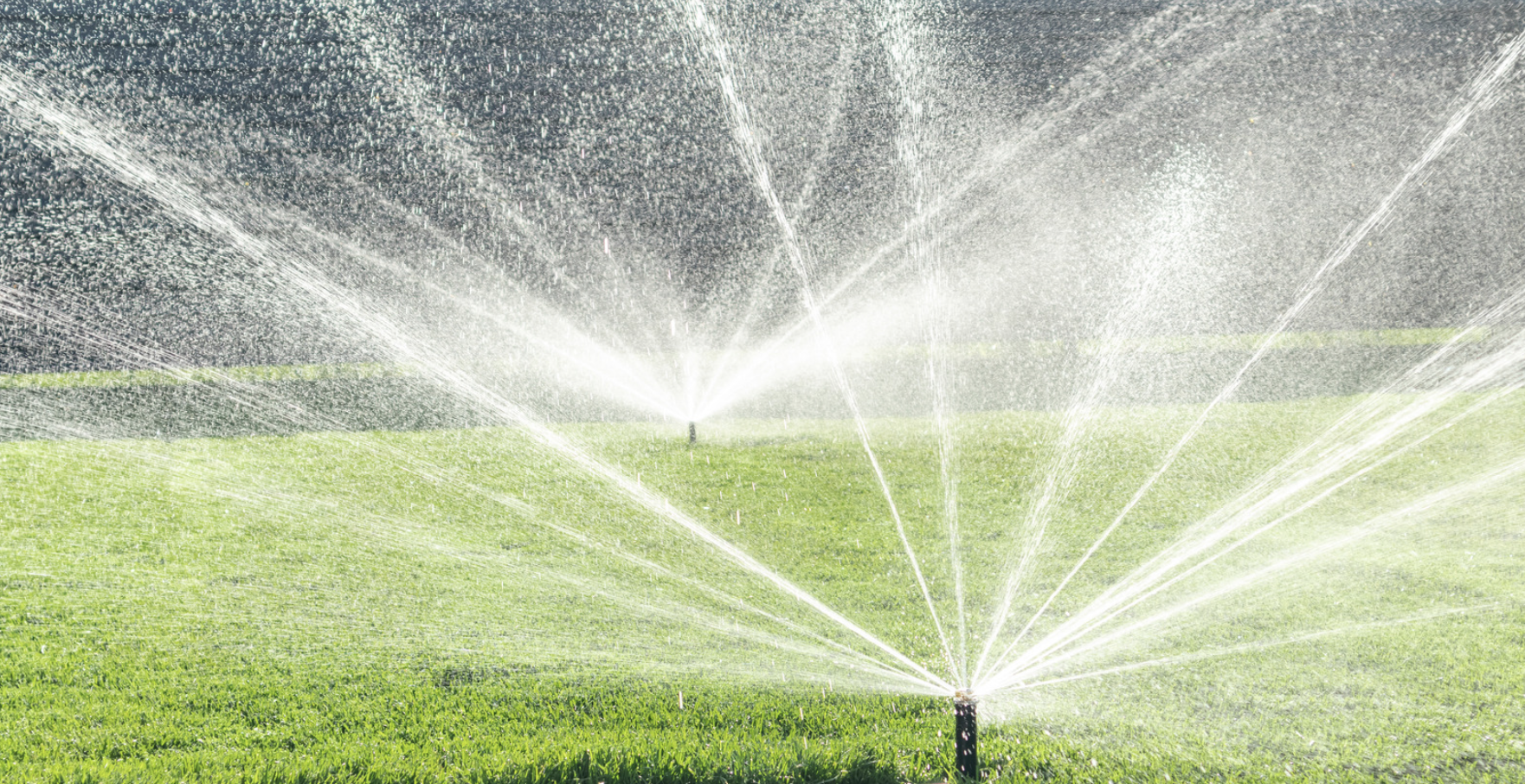 What comes to mind when you think of a front yard with perfect curb appeal? If you live in the desert, you probably don't envision a typical rolling green lawn, lush trees, and manicured hedges. Maintaining such greenery in the desert can be costly, especially in summer months when temperatures in Southwest states often exceed 110 degrees Fahrenheit and rainfall is scarce.
What comes to mind when you think of a front yard with perfect curb appeal? If you live in the desert, you probably don't envision a typical rolling green lawn, lush trees, and manicured hedges. Maintaining such greenery in the desert can be costly, especially in summer months when temperatures in Southwest states often exceed 110 degrees Fahrenheit and rainfall is scarce.
While the national average annual rainfall is 30 inches, in the Valley of the Sun, we only receive only about eight inches of rain each year. Consequently, up to 70% of household water usage in desert states goes toward landscaping, compared to just 30% in other regions. Unfortunately, much of this water is wasted due to inefficient watering practices.
When you decide to sell your property, you might worry about whether buyers will be interested if it doesn’t have a “traditional” American lawn? Fortunately, achieving great curb appeal in the desert doesn’t have to be costly or environmentally harmful. There are many sustainable ways to achieve a beautiful property, and plenty of desert landscaping ideas that require no water at all.
Consider the addition of small potted trees or plants, install a small fountain, or create a dry creek bed with river rock. These simple additions add visual interest and are easy to accomplish.
Here are some of the top ways to improve your desert landscaping’s curb appeal while protecting the environment:
Lawn Maintenance
If you're planting new grass, consider using drought-tolerant seed and sod, which require less water to maintain. For an existing lawn, avoid watering in the afternoon when intense sunlight speeds evaporation. Instead, water at sunrise when the heat and sun intensity are lower, or better yet, after dark when the sun isn't a factor at all.
Pay close attention to how long you let your sprinklers run. It’s not enough to rely on manual guidelines or factory settings. Test your sprinkler’s output, determine how much water your lawn type actually needs, and how frequently it should be watered.
After figuring out the optimal watering duration and frequency, don't just set your sprinkler system and forget it. Maintain your water conservation efforts year-round by adjusting your sprinkler output seasonally.
Have you considered turf?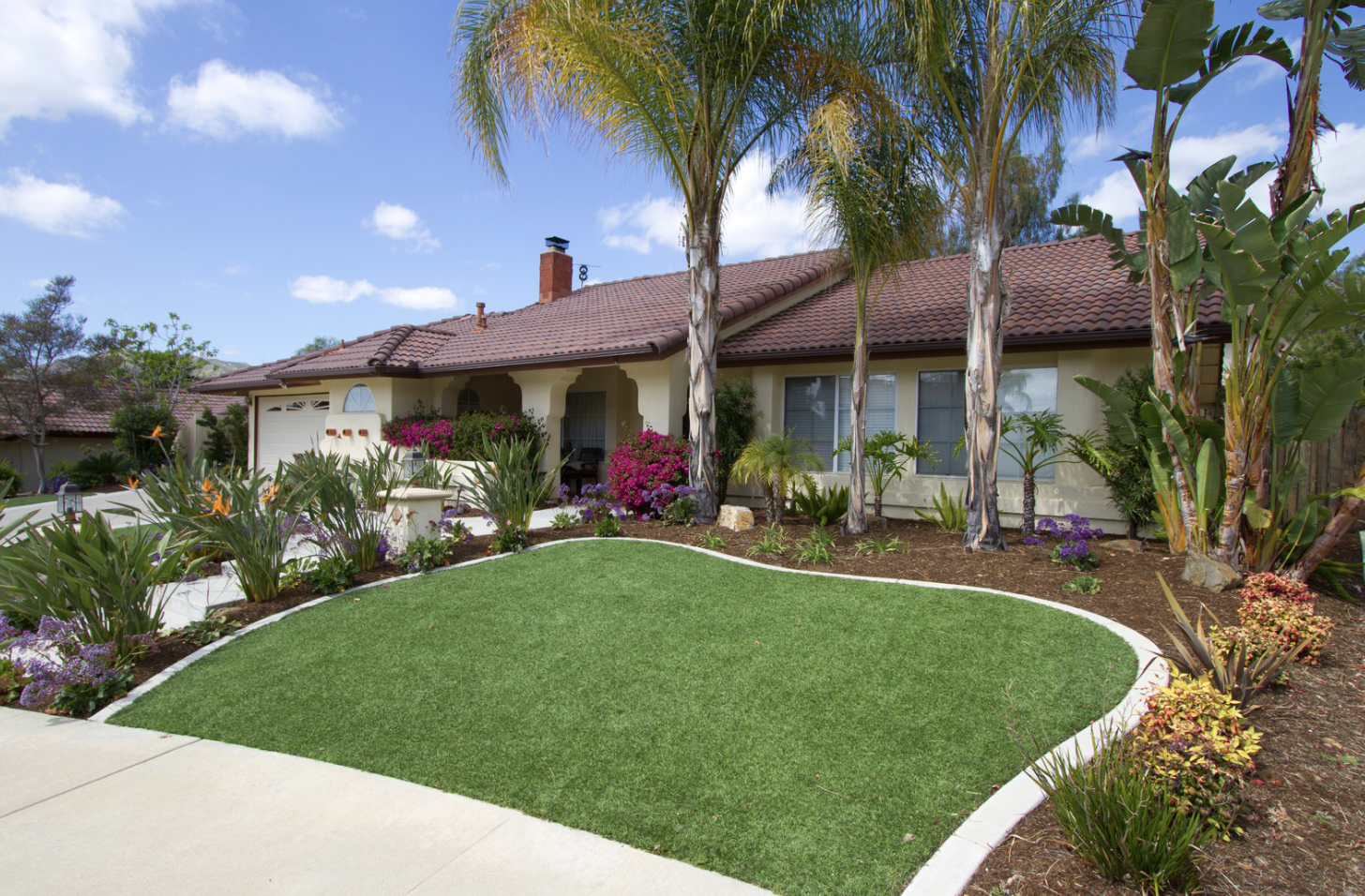
In the Phoenix area, many homes, especially new builds, lack traditional grass lawns. However, artificial grass can be a great option for small areas if you still want the appearance of a lawn. You might not want to cover the entire front of your property, as it does require some upkeep and can look worn if not maintained. On the other hand, using it in small sections is an excellent way to add a touch of green to your curb appeal.
A small patch of lush faux grass bordered by bricks or river stones can provide the pop of color needed to enhance your desert yard’s curb appeal. Picture it like a small, curvy putting green.
The best part is, you’ll never need to mow or water your artificial lawn. However, it’s not entirely maintenance-free. You’ll need to brush down your faux grass regularly and occasionally rinse it with water to keep it looking fresh. Additionally, you may need to pull weeds or use weedicides to keep your artificial grass weed-free. While artificial grass may closely resemble the real thing, it's important to remember it's not. The synthetic material in turf can reach temperatures as high as 180 degrees, which could burn your feet or your pet’s paws!
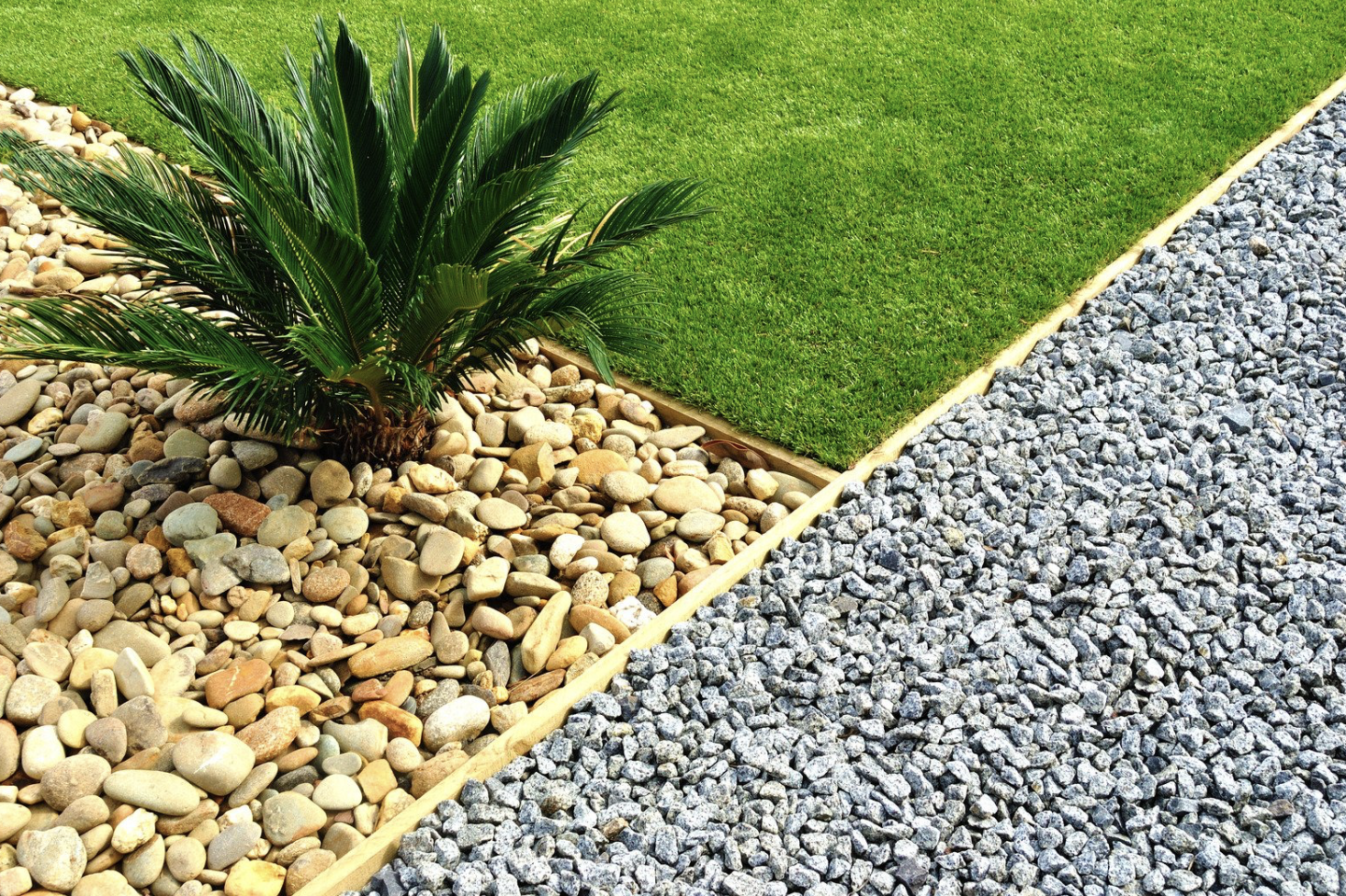 Crushed Gravel
Crushed Gravel
The expense and maintenance associated with grass in the desert, both real and artificial, have led many homeowners to remove lawns altogether. Rock lawns are a low-maintenance option for desert home sellers since they don’t require watering or mowing. However, you’ll still need to manage weeds and rake the rocks to keep them tidy.
But rock-covered yards don’t have to be colorless or lacking in curb appeal. Desert residents can add vibrant touches by incorporating different types of rock that vary in color, size, and texture. You can cover the majority of the lawn with crushed stone, gravel, or decomposed granite, and create a natural walkway with crusher fines. To add height and interest to your landscape design, consider bringing in a few boulders. You can also use multiple textures, colors, and types of landscaping rock to define spaces around various desert plantings.
Xeriscaping
You don’t have to sacrifice greenery in your desert landscaping, even if you eliminate grass. Many plants can survive and thrive in the desert, requiring minimal water to stay healthy. This eco-smart landscaping style, known as xeriscaping (sometimes mispronounced as zeroscaping), focuses on using low-water plants to add life and color to your yard. Palm trees, cacti, and succulents are popular low-water, low-maintenance choices, but they are not your only options. Vines, ornamental grasses, and even perennial and annual flowers that bloom during cooler months can also thrive in desert climates. The City of Scottsdale’s website offers a wealth of free advice on suitable plants.
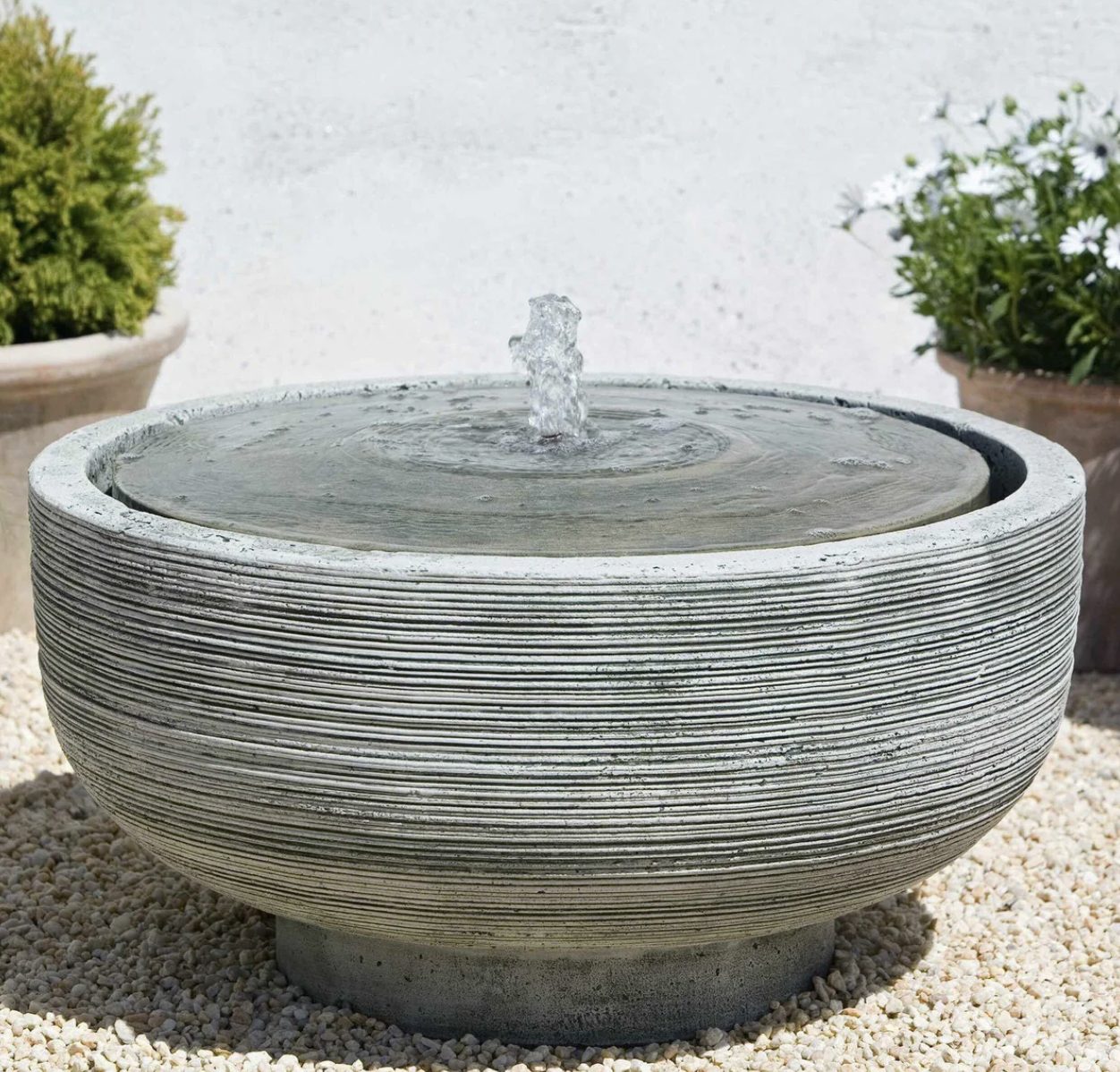 Consider Adding a Water Feature
Consider Adding a Water Feature
A water feature in your front yard creates a serene, welcoming atmosphere. When buyers hear the soothing sound of water as they approach, it leaves a lasting positive impression of the house. Considering water conservation is crucial in desert landscaping, how can adding a water feature be an eco-smart option? The answer is straightforward. Fountains can enhance the dry feel of a desert front yard with minimal environmental impact, similar to lawns and plants, but they require less water.
Most medium-sized outdoor fountains only need 3 to 10 gallons of water to operate. Opt for a self-contained fountain that recirculates water rather than one that continuously draws from your plumbing. This way, you only need to top up with fresh water every few days. In contrast, large grassy yards can consume over 6,000 gallons each time you water them. Therefore, adding a water feature doesn’t waste more water than having plants, and it doesn’t have to be expensive.
You can achieve the benefits of a water feature with just a birdbath or a wide, shallow container and an affordable solar-powered fountain. If you choose to DIY a fountain in a container, consider adding water plants to enhance the visual appeal and add foliage color to your makeshift pond. Ensure you select the right sprinkler head for your DIY fountain. For small, shallow basins, use a bubbler head that gently bubbles water instead of shooting it high into the air. Avoid sprinkler heads that shoot fine streams of water high into the air, as they can lead to quicker evaporation in desert landscapes. Additionally, if the container is too small, it may expel all the water within a few hours.
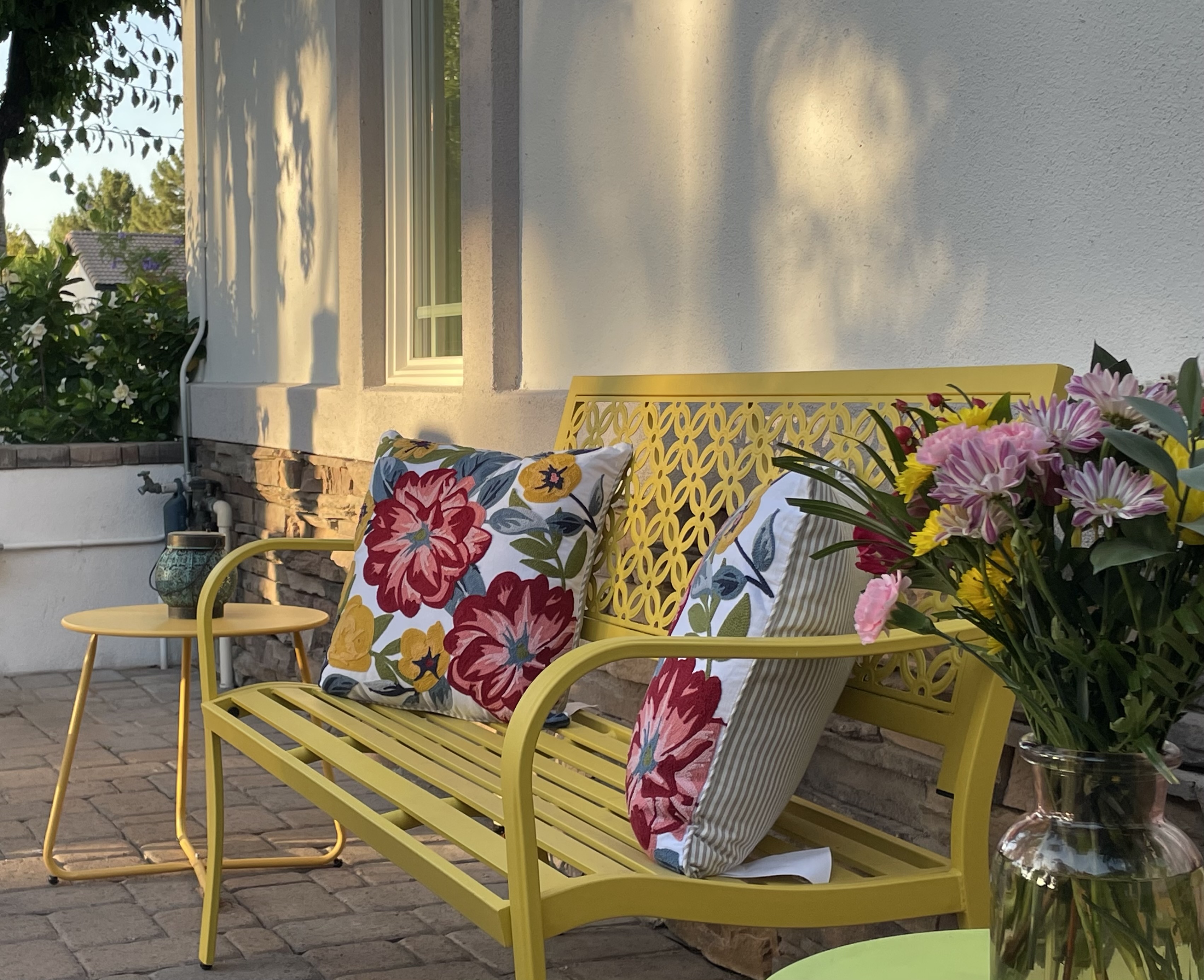 Seating Areas
Seating Areas
For many homeowners, the condition of their front yard often comes into focus only when it’s time to sell the house. This is likely because they spend minimal time enjoying a front yard designed for low maintenance. During the scorching summer months, desert dwellers typically give their front yards a cursory glance as they rush from their air-conditioned cars into their cool homes. However, it’s important not to overlook the clear skies and pleasant temperatures of the wonderful fall and winter months, which are major draws for many people moving to the desert. A seating area in your front yard is a delightful way to showcase this favorable weather to potential buyers. It also suggests the prospect of many peaceful hours spent outdoors, appreciating the desert curb appeal you’ve diligently cultivated.
Seating areas don't have to be elaborate. A simple bench, a pair of Adirondack chairs on the front porch, or a porch swing on the patio is enough. Enhance the area with accessories like throw pillows and cushions to add color and texture. Another advantage of desert living is the low likelihood of rain, which means your outdoor accessories are less susceptible to weather damage.
Lawn Ornaments
Speaking of accessories, no desert curb appeal is complete without those little decorative details, like your house numbers, porch light, door hardware, and the mailbox. While you may be living in the desert, there’s no reason why these accessories need to scream that fact with kitschy designs like a cactus-shaped mailbox. Going heavy on the kitschy Southwestern décor can be off putting, especially on a modern house. However, if your house already has a Southwestern flair, then you can go a little bit kitschy with the Western décor.
Sell Your Property while Minimizing water Use
It’s no secret that there’s a history of drought in the U.S. and the desert is hardest hit during water shortages. Let’s all do our part to conserve water when planning our desert landscape designs. We can come up with eco-smart designs that have the right curb appeal to help a property to sell.
#CurbAppeal #DesertYard #DesertLawnMaintenance #CrushedGravel #Xeriscaping #WaterFeatures #OutdoorSeating #LawnOranments



